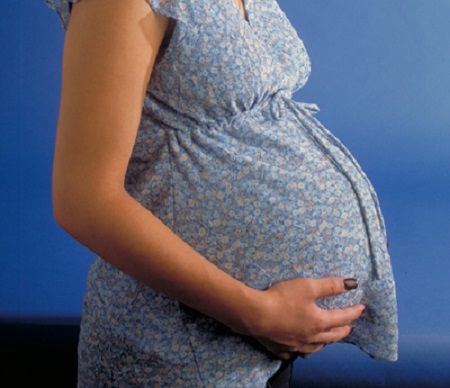Time To Give Birth? How The Female Body Knows When To Start Labor


This question originally appeared on Quora. Answer by Camila S. Espinoza, Chilean midwife.
Labor and birth are still a mystery to us. We don’t really know what sets the entire process in motion, but it has always been suspected that the fetus is in charge of starting the cascade of signals that eventually leads to labor.
The rest of the process involves a cocktail of hormones in order to move the uterus from a primary stage (myometrial quiescence, mainly regulated by progesterone) where the myometrium (muscular layer of the uterus) is actively relaxed in order to accommodate a growing fetus, to a secondary stage, where the myometrium increases the expression of uterotonic receptors and becomes responsive to uterotonic agents (substances that produce uterine contractions).
There are 4 main uterotonics that have been proposed as potential mediators in the initiation of labor: Oxytocin, Prostaglandins, Endothelin-1 and Platelet -Activator Factor. All are produced by fetal annexes and/or the placenta, and increase in concentration in amniotic fluid and/or maternal plasma during labor.
Prostaglandins (and other inflammatory mediators) help soften the cervix, stimulate myometrial contractions, and contribute in the expression of gap junctions (that allow communication between myometrial cells). Endothelin-1 regulates muscle tone and placental blood-flow to and from the fetus. Platelet-Activator Factor and Oxytocin play a role once labor has started, It has been proposed that the first one helps maintain uterine contractions, while oxytocin stimulates rhythmic contractions that increase in intensity and frequency.
Other hormones, like relaxin, may contribute in the dilation of the cervix, as well as the softening of pelvic joints, in order to expand the diameter of the birth canal (like nutation and counternutation of the sacroiliac joint, among others)
This is a very superficial (and incomplete) explanation of what might set labor in motion. But we don’t know anything with certainty, and we probably never will. Human labor and birth is different from the one experienced by other mammals (like rats), and conducting experiments on pregnant humans is simply not a possibility.
What people feel during labor and birth is a bit easier to explain. Mild contractions start weeks before labor begins. Some people don’t even feel them, other people describe as pressure in their lower abdomen, or refer to it as a sharp pain in their lower backs. Contractions increase in intensity as labor approaches, becoming more and more painful. Frequency of contractions also increases, causing cervical effacement, dilation and accommodation of the fetal head in the birth canal.
The urge to push is a neuroendocrine reflex (called Ferguson Reflex) that’s caused by the compression of the fetal head against the cervix, pelvic floor and vaginal walls. This causes a positive feedback that increases the release of maternal oxytocin, which increases the frequency and intensity of contractions, which moves the fetus through the birth canal, closing the circle.
Active pushes + contractions contribute in a faster progression of labor until the cervical effacement and dilation is completed. After that, the urgency to push will increase, until the fetus is fully delivered.
More On Quora:



























